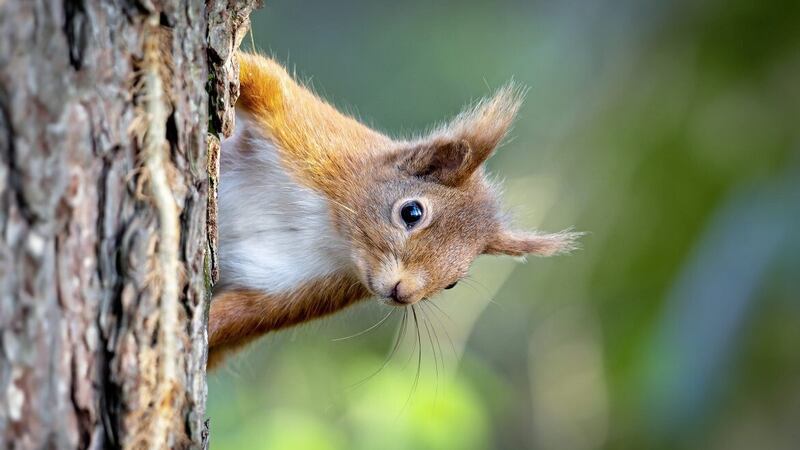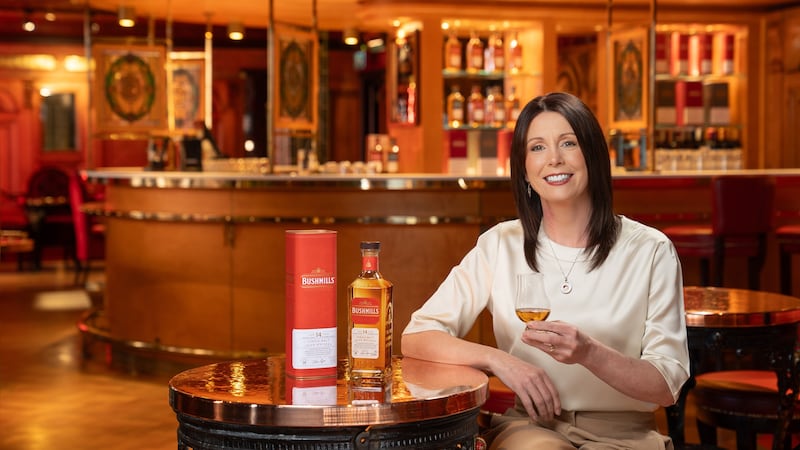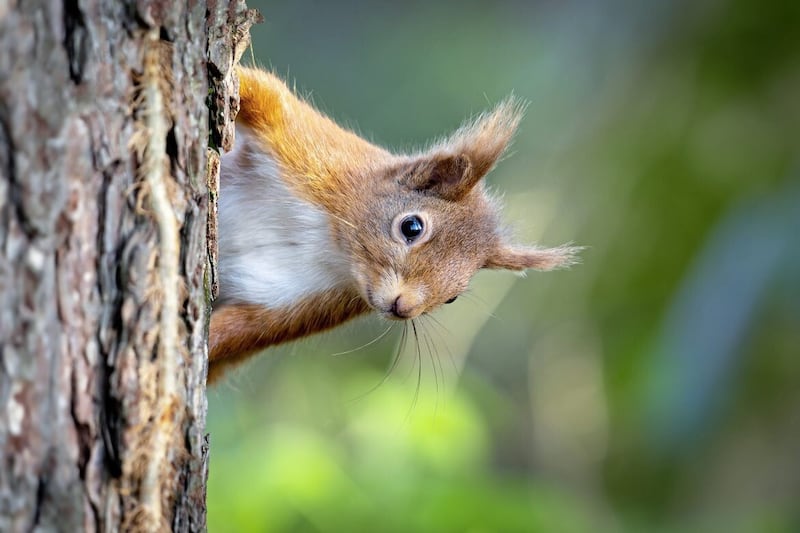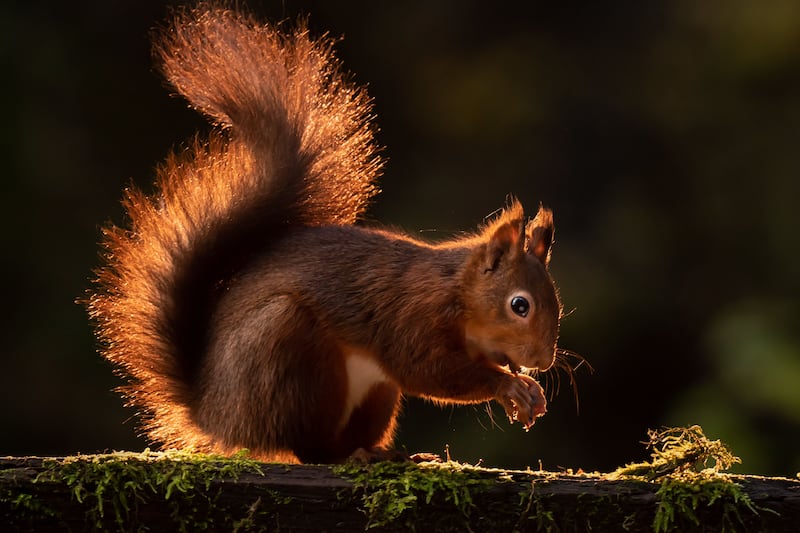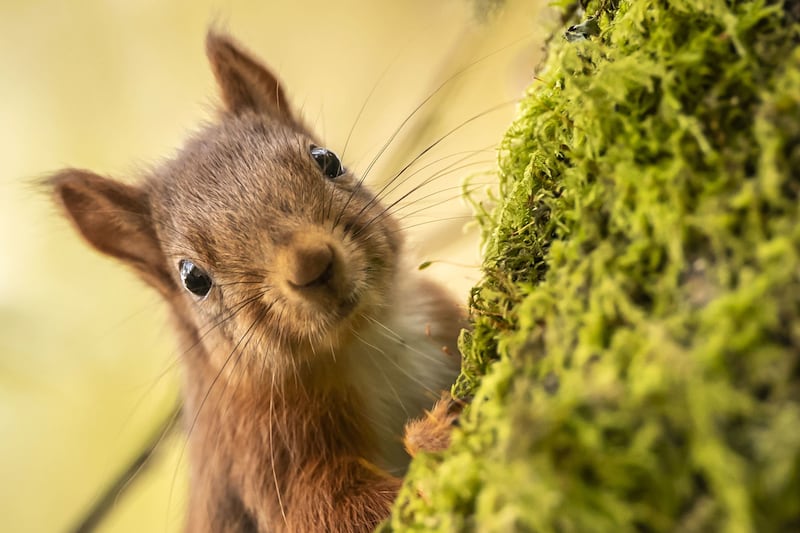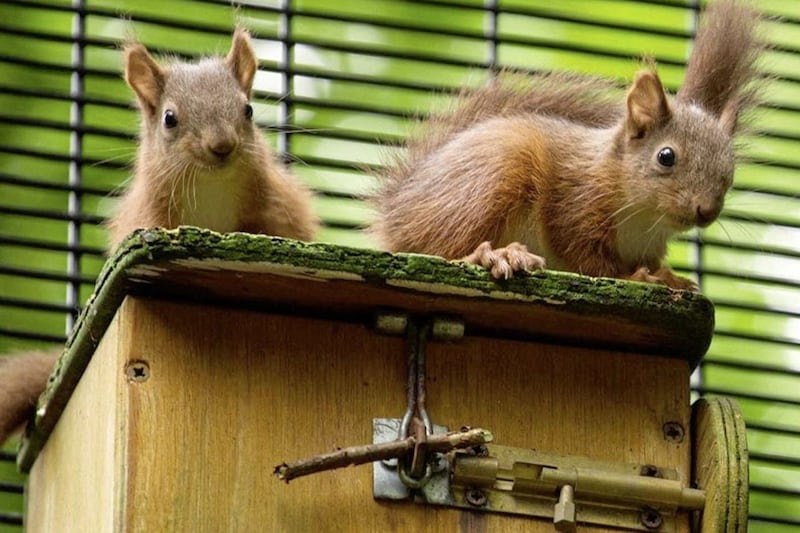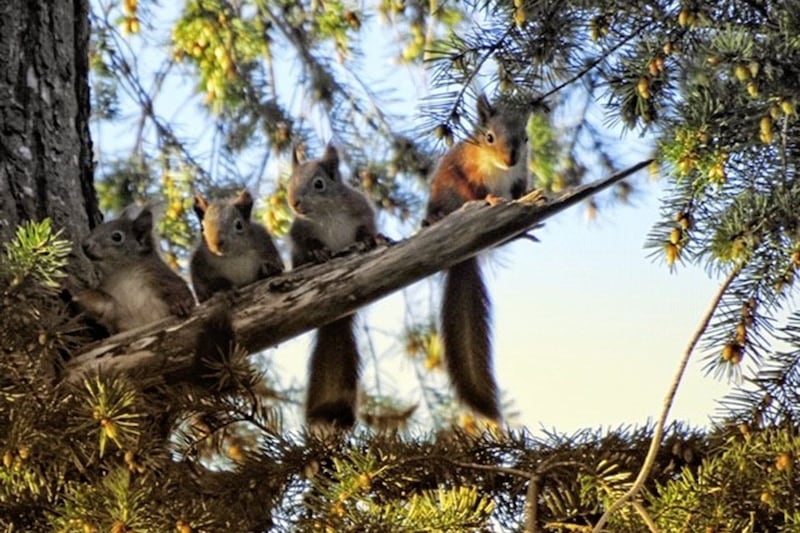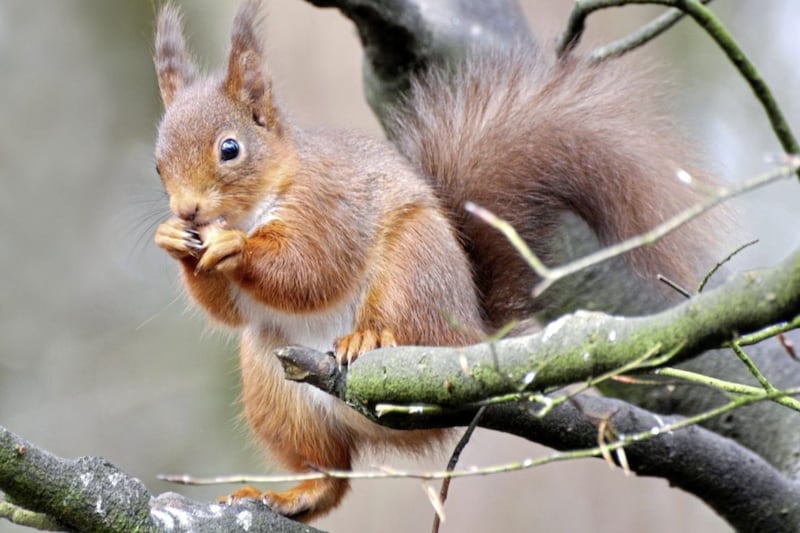Walking recently along a quiet road near Drumquin, in west Tyrone, I was thrilled at seeing a red squirrel working its way through a high hedge of whitethorn mixed with ash.
Always alert, navigating the branches, it hugged the limbs of the thorn structure, occasionally rising to the upper ash boughs before springing to an adjacent branch, constantly searching, moving. A thick bushy tail in its wake, this agile chestnut coloured squirrel pressed onward into the distance and out of sight.
Considered our native squirrel, Tom Hayden and Rory Harrington in Exploring Irish Mammals (2000) note that "it has probably been a member of Ireland's fauna since prehistoric times" and that "by medieval times red squirrels were apparently sufficiently abundant in Ireland to support an export trade in pelts".
Although they became extinct in the 18th century, red squirrels became re-established here again by the end of the 19th century, with re-introductions to sites in Wicklow, Dublin, Galway and Antrim.
Watching Sciurus vulgaris journey along this rural artery emphasised the importance of our hedgerows to wildlife, providing cover and safe passage for animals such as badgers, foxes, mice, hedgehogs and more, while they traverse the countryside.
In addition to housing birds, and acting as food larders of fruits and berries, various plant species and insects live in close proximity.
Read more:
Take on Nature: Nourishment for the senses
Denzil McDaniel: For unionists, clinging to history won't hold back the tide on a new Ireland
Cormac Moore: Why is there an all-Ireland team in rugby and not in football?
As well as being effective stock and wind barriers on farms, hedges also have the positive environmental benefits of storing carbon and helping reduce run-off and flooding.
After the nimble squirrel left my gaze, I observed the hedgerow more closely, and thought of Heaney's Blackberry-Picking hedge in "Late August", when "For a full week, the blackberries would ripen" and "hands were peppered/With thorn pricks".
I noticed it had become 'leggy' and 'gappy' in places at the base, a common feature nowadays of many hedgerows. The presence of these gaps reduces the hedge's capacity to function properly, especially as an animal screen.
Although some of Ireland's hedges date back to medieval times, forming townland boundaries, most were planted as part of the controversial Enclosure Acts of the 1700s and 1800s, imposed on the smaller farmers of common and arable lands, a time when, as Goldsmith said in The Deserted Village, "the tyrant's hand is seen", ending the collegiate nature of farming which had survived for centuries.
Recent studies have shown that Ireland's network of hedges, north and south, have greatly diminished, partly due to increasing field sizes and new fencing methods for livestock protection.
Efforts have however been taken to maintain these wildlife corridors with a revival of the traditional craft of 'hedge laying', a technique which rejuvenates the hedge's growth at the base, helping to form a denser, more robust, biodiverse structure.
Some rudimentary training in the technique many years ago enabled me to try out the procedure. The process involves partly cutting through the stems or 'pleachers' near to the ground, allowing them to be bent forward (at an approx 45-degree angle) still hinged to the cut stump, to continue growing and flowering.
New shoots of growth will also emerge from the stump, thickening the base, and unlike coppicing, hedge laying reinvigorates the hedge, retaining the living parts while encouraging new growth at its feet.
An important instrument for improving the biodiversity and sturdiness of our hedges, the art of hedge laying is promoted by The Hedge Laying Association of Ireland, which also trains people in the craft and assists landowners in the management of their hedges.
With the red squirrel long gone, I reflected on the importance of maintaining our hedges, essential corridors for connecting habitats and sustaining much of our wildlife.
